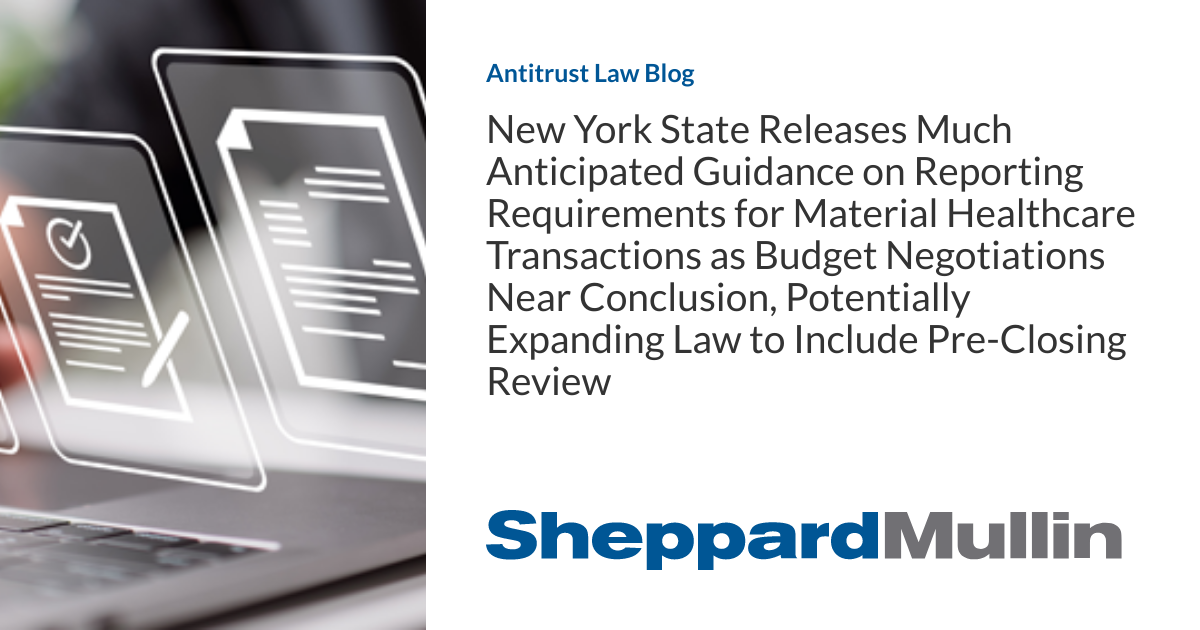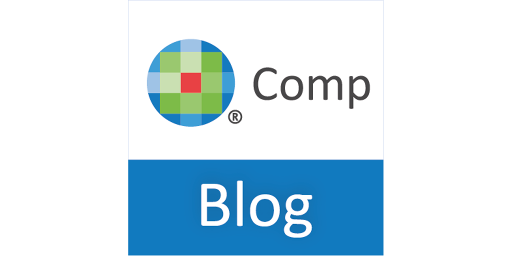New York State Releases Much-anticipated Guidance for Reporting Requirements on Material Healthcare Transactions, as Budget Negotiations near conclusion. Law could be expanded to include pre-closing review
In response to questions from the healthcare community regarding the reporting requirements and statutory interpretation, the DOH has released a set of Frequently Asked Questions (FAQs) to clarify the scope and application of the Material Transactions law. The DOH has now released a list of frequently asked questions (FAQs), in response to the questions raised by the healthcare community about the reporting requirements and statutory interprettion. The DOH has released a set of Frequently Asked Questions (FAQs) to clarify the scope and application of the Material Transactions law. This includes mergers, acquisitions or affiliations that result in a gross in-state increase of at least $25 million over a rolling 12-month period. The FAQs provide important guidance regarding the types of transactions and entities that are covered under the law, how to evaluate the financial thresholds for reportability, and the expected content of the notice.
This update highlights key takeaways from the new guidance.
Expanded Interpretation of “Health Care Entity”
The FAQs clarify that the definition of a “health care entity” is to be interpreted broadly. The FAQs clarify that the definition of “health care entity”, which was included in the statutory language, includes dental practices, clinics, wholesale pharmacies and accountable care organizations. The DOH notes that the above list is not exhaustive, but illustrative of the types of entities covered under the Material Transactions law.
Clarification on the $25 Million Threshold and “De Minimis” Transactions
The FAQs provide greater detail on how the $25 million materiality threshold is to be calculated under the Material Transactions law. The DOH confirmed this figure should be calculated annually, based on the rolling 12-month “lookback period” preceding the anticipated closing date of a transaction. The FAQs also emphasize that gross in-state revenue must be assessed for each transaction within the applicable lookback period, based on the actual or anticipated closing date of each individual transaction. The FAQs also emphasize that gross in-state revenue must be assessed for each transaction within the applicable lookback period, based on the actual or anticipated closing date of each individual transaction.
The DOH’s examples clarify that the $25 million threshold is not tied to revenue growth caused by the transaction, but rather to the combined gross in-state revenue of the parties to the transaction. If Company A and Company B were to merge or acquire each other, and Company A had generated $20 million in New York revenue and Company B had generated $10 million, then the combined in-state revenues of $30 million would be above the threshold and the transaction would become reportable. This is true even if the transaction does not independently increase the surviving entity’s in-state revenue by $25 million or more.
Similarly, if a health care entity completes multiple related transactions during a rolling twelve-month period–each involving different counterparties–the added in-state revenue attributable to each transaction must be aggregated for purposes of determining whether the threshold is met. The FAQs include illustrative scenarios where three separate deals, closed at different times within the lookback period, together exceed the $25 million mark and trigger a reporting obligation.
The DOH has also confirmed that a transaction may be reportable even if none of the parties are domiciled or licensed in New York, so long as the transaction would result in $25 million or more in gross in-state revenue attributable to New York operations.
Treatment of Transactions with Multiple Regulatory Components
The FAQs provide important clarification for transactions that include multiple components, where some portions are subject to existing regulatory review processes or approvals under other provisions of the Public Health Law (e.g., Articles 28, 30, 36, 40, 44, 46, 46-A, or 46-B), such as the Certificate of Need (CON) approval process.
According to the DOH, parties must separately evaluate those components of the transaction that are not subject to these existing review frameworks. If the gross in-state revenue attributable to the portions of the transaction that are not subject to another regulatory review process or approval equals or exceeds $25 million, then the transaction is still reportable under the Material Transactions law, even if other parts of the transaction are already being reviewed through another regulatory process.
The DOH places responsibility on the parties to perform a good faith estimation of the in-state revenue associated with each portion of the transaction and to determine whether the elements not otherwise subject to review independently trigger the reporting threshold.
Expectations for Transaction Impact Assessment
Until the DOH issues its electronic Material Transactions Notice Form, parties are expected to provide a good faith assessment of how the transaction may impact cost, quality, access, health equity, and competition. The FAQs outline illustrative factors for consideration, such as changes to services, insurance network participation, locations, staffing levels, and services to historically underserved populations as well as rate increases and any increase in market consolidation.
While the guidance does not mandate a particular methodology for evaluating impact, the inclusion of specific considerations provides stakeholders with a useful framework for preparing responsive disclosures.
Public Comment Process
The DOH also outlines the public comment process with respect to reported transactions. The DOH’s website includes a summary of every reported transaction. Interested parties can submit their comments via email. Notably, there is no subscription list or automatic update service; stakeholders must check the DOH website regularly to stay informed.
Looking Ahead
The release of the FAQs coincides with proposed legislation included in Governor Hochul’s FY 2025-26 executive budget that would expand the Material Transactions law and the DOH’s authority under it. The proposal, if enacted, would change the law to include a pre-closing review at the DOH’s discretion, a review of cost and market impacts, and a five-year reporting obligation for the parties to the transaction to report on the impact of a transaction on cost quality access health equity and competition. It would also require notice to be given at least 60 days prior to the closing of a material transaction, instead of 30 days as is currently required.
The deadline to pass the New York State Budget, which was originally due on April 1, 2020, has been extended twice, once to April 3, 2020, and now again to April 9, 2025 as the Legislature continues budget negotiations with Governor Hochul. It is unclear if the proposed expansion to the Material Transactions Law will be accepted in its current form or not.





